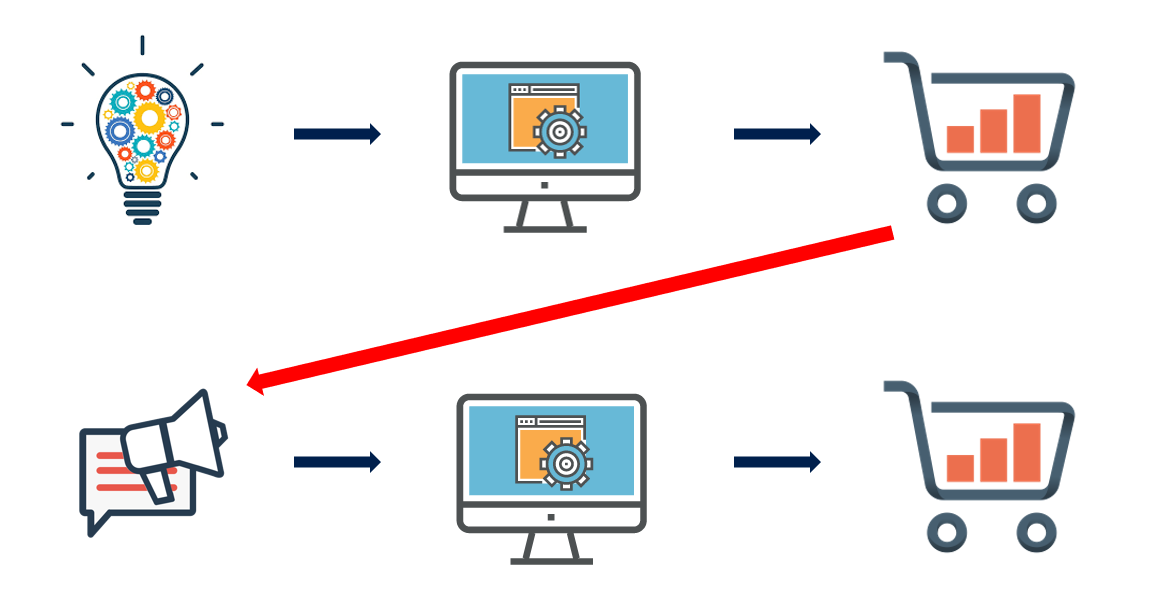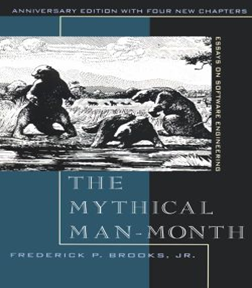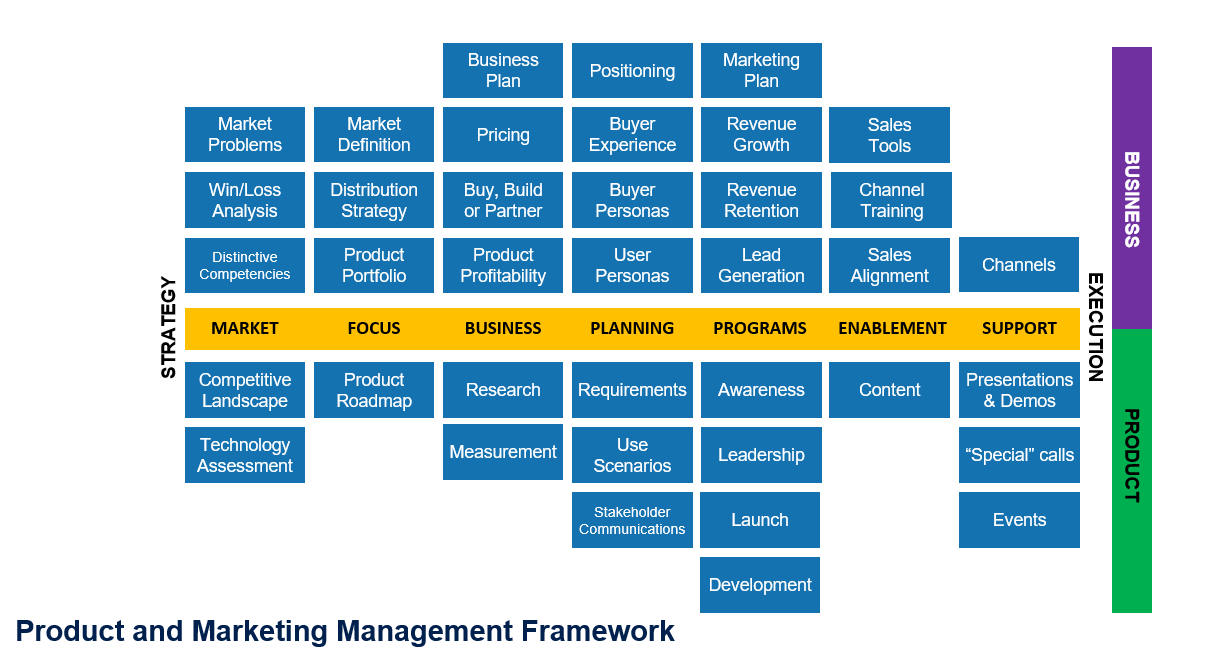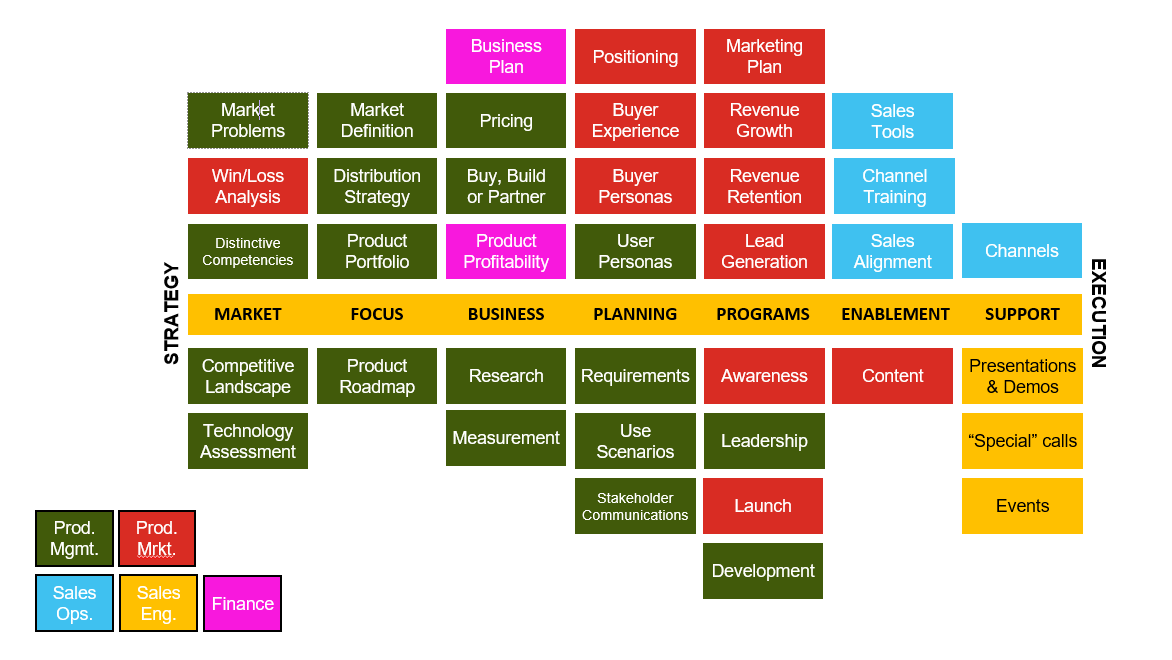
Anyone who plans to launch their products, seeks to expand their competencies or wants to debate with us - please, under cat.
Course table of contents
1. < —
2.
3.
4.
5.
6.
7.
8. - -
9.
—
My name is Vasily Rudomanov and I am responsible for product development at Acronis. I have been involved in the engineering or technical side of creating products and solutions for many years. However, the technical experience I gained eventually led me to specialize in software development. Over the years of work in this field, I became convinced that the ability to work with your product, understand how an idea turns into a finished product, choose market niches, position it and plan development can be useful for developers, engineers, founders of startups, and department employees. sales and many other professionals in IT companies, not just product managers.
In our course, we decided to share our experience in software development, which we have accumulated over several years of creating and promoting software products in the Russian and international markets.
The founder of a startup is de facto the chief product manager of the company and therefore completely determines its development. Subsequently, business owners transfer this function to product managers. Therefore, the latter must perform a huge number of tasks, control the development process, analyze market needs, solve customer problems and much, much more. To do this, you need to have a whole range of important knowledge and skills, as well as be able to work with specialized frameworks. But today we will start with an idea ... with that “unicorn” that appears in the head of every person when he decides to give the world a new product.
Why are some projects fired while others are not?
How is a product usually created? Usually an idea comes up, and a group of people starts to implement it. In the heads of managers, bright thoughts arise about how exactly the product should develop. Top managers, directors, advisers, company presidents or owners have their own opinion. They form the business development strategy, as well as the product itself.

However, this is not all: in addition to the strategy, there is often an urgent need “to implement new functionality in 2 weeks for a specific deal”. Engineers, developers and architects suggest using new technology stacks, databases, technologies and programming languages, and the support team reports that there are technical bugs in the product and they need to be fixed.
But this system is missing something. In the absence of product management, none of this has anything to do with the market! Huge resources can be wasted, and a great idea may never see its realization simply because the product has evolved in the wrong direction that makes money.
The essence of a product manager
In fact, the product manager has to find the problems in the market and come up with a solution to them. But research shows that in reality, product managers spend less than 20% of their time doing this. The rest goes to work with all participants in the process, including engineers, top managers and, of course, the clients themselves.

The point is that the “from the idea” approach does not work, whatever the idea is - the manager himself, the director or the owner of the company. Sooner or later, you have to listen to the market, because when sales managers start selling a product, it turns out that something is missing in it, the product is being sold to the wrong people, in the wrong region, maybe in the wrong price category. After that, there is a revision or even a release of a new version of the product, although it was possible to immediately start working in the right direction. This is why the role of a product manager is so important to a successful go-to-market.

Product management framework
Many developers are already familiar with Fred Brooks's The Mythical Man-Month. I highly recommend reading it if you haven't already. Fred Brooks was involved in the creation of the IBM 350. His team has done a great job building software for the mainframe. And in his book, he described very well what is the difference between a program and a product or software system.

Brooks says that it takes three times as long to turn a program that was created and is running on the coder's computer into a software product. It is necessary to test it, release documentation, put it on support, check its performance on various software platforms, and so on. And if the developer spent a month on the creation of the program, another 3 months will pass before the software product appears.
The software system is even more complex. Interfaces need to appear; so that the program can interact with different components of the platforms and to be embedded in a specific ecosystem. This takes three times more time. Thus, if you want to enter the market, you need to spend 9 times more time and resources on it.
This was an example from the development area, but this example shows well that to do a big job, you have to think about a much wider range of activities. That is why a product manager has a huge number of responsibilities and tasks that go beyond setting requirements for a developer. Managers make a huge number of decisions - both tactical and strategic, and frameworks created specifically for the development of software products and systems help for systemic work.
Strategic decisions in the long term affect the future of the company and to implement them, you need to complete a whole set of planning elements. They are reflected on the yellow line in the center of the framework.

Functional blocks are attached to each segment of the strategy, which reflect the actions necessary for the successful creation of a product. All of these elements are located at the bottom of the framework.
But besides, in order to create the product itself, you need to perform many actions from a business point of view. Only then will it be possible to promote the product and really bring it to the market. These blocks are at the top of the framework.
In the course of our posts, we will get acquainted with all the elements of this framework, which I borrowed from the Pragmatic Institute.by first making a fork and adding to it those elements that I consider important and removing those that are not used in Acronis. In addition to the framework, we will figure out what methods are available for solving each of the tasks of product development and promotion, as well as define the areas of responsibility for different departments and specialists when working on a software product:

Because despite the fact that the product manager is responsible for the whole business with a specific product, of course, employees of other departments, with whom the product manager interacts directly, should, of course, "paint over" this or that functional block: marketing managers, sales team members, financial department, developers, presale.
Working with the framework is very important for all categories of employees of a modern IT company.
Conclusion
Today we talked about general approaches to product management, which will be useful both directly to products and CEOs of startups that should really take off (at least in the opinion of the founders). In the next post, we will discuss how to determine which market segment you are targeting your product and how to conduct a competitive analysis of that market. If this topic is important and useful to you, do not forget to subscribe to our blog.
→ Video recording of all lectures of the course is available on YouTube
First lecture: